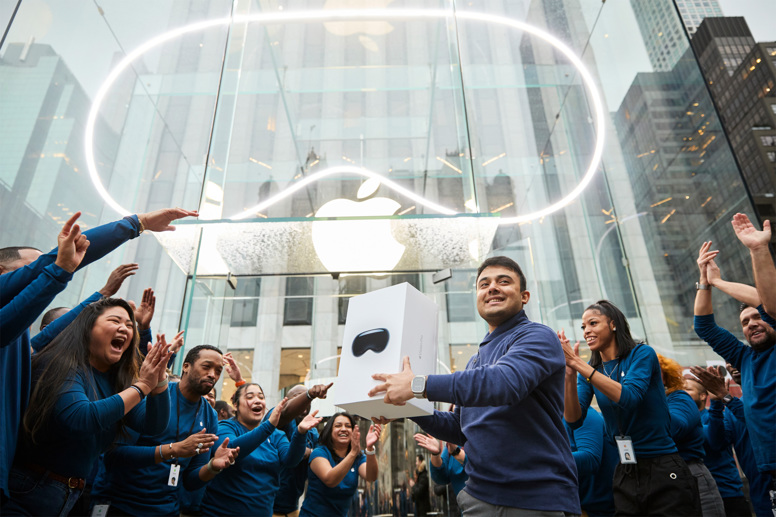Apple’s long-awaited extended reality (XR) headset, the Vision Pro, has finally landed, going on sale in the US for the first time last Friday.
While there has been rumors about the arrival of the Apple headset for at least a year now, the product has been in development for much longer. According to a report by Forbes, an Apple patent for a head-mounted display (HMD) was unearthed from 2007, meaning that the Vision Pro has taken at least 17 years to develop.
This seems like an unprecedented amount of time to spend on creating a single product, even for a company notorious for its perfectionism. So why did it take so long to get it to market?
The received wisdom seems to be that the concept pre-dated the technology. Even now, XR technology is still a work in progress and for Apple to be able to do everything they wanted to do with the device, it required that the technology itself was mature enough to meet their demands.
But was Apple being too precious? After all, while Apple was tinkering away at its design it left the field completely open to its competitors to sell their own XR products. Meta, for example, has reportedly sold nearly 20 million units of its Quest headsets while the Apple engineers worked on their product.

The first customer to buy the Vision Pro shows off his purchase outside the Apple store in New York. Picture: Apple
What was to stop Apple from producing a headset years earlier and then refining and improving upon its design in later generations, in much the same way it did with the iPhone?
The iPhone, in fact, is a useful comparison. While it is frequently heralded as one of the great consumer tech innovations of the last few decades, it’s important to realize that the first iPhone only took Apple two years to develop.
What’s more, then-CEO Steve Jobs didn’t really see the iPhone’s ground-breaking potential when it was first launched back in 2007 (the same time Apple was patenting its HMD design).
Often revered for being way ahead of his time, Jobs’ powers of foresight were noticeably missing with the iPhone, with the Apple founder reportedly more concerned about the phone’s ability to make calls, overlooking the thing that made the device game-changing: its touchscreen app display.
In fact it was only through launching the phone onto the market that Apple was able to understand the iPhone’s true potential. As much as anything, it was the feedback from users that helped shape future iterations of the device.
That said, Apple has built a reputation on taking its time over product development so that when it does finally launch, the product in question often tends to offer the final word for whatever product category it covers.
At this juncture, the tech reviews for the Vision Pro are glowing and the pre-sales look positive. But only time will tell whether Apple’s reticence in bringing an XR device to market earlier will prove a missed opportunity or a masterstroke of delayed gratification.

